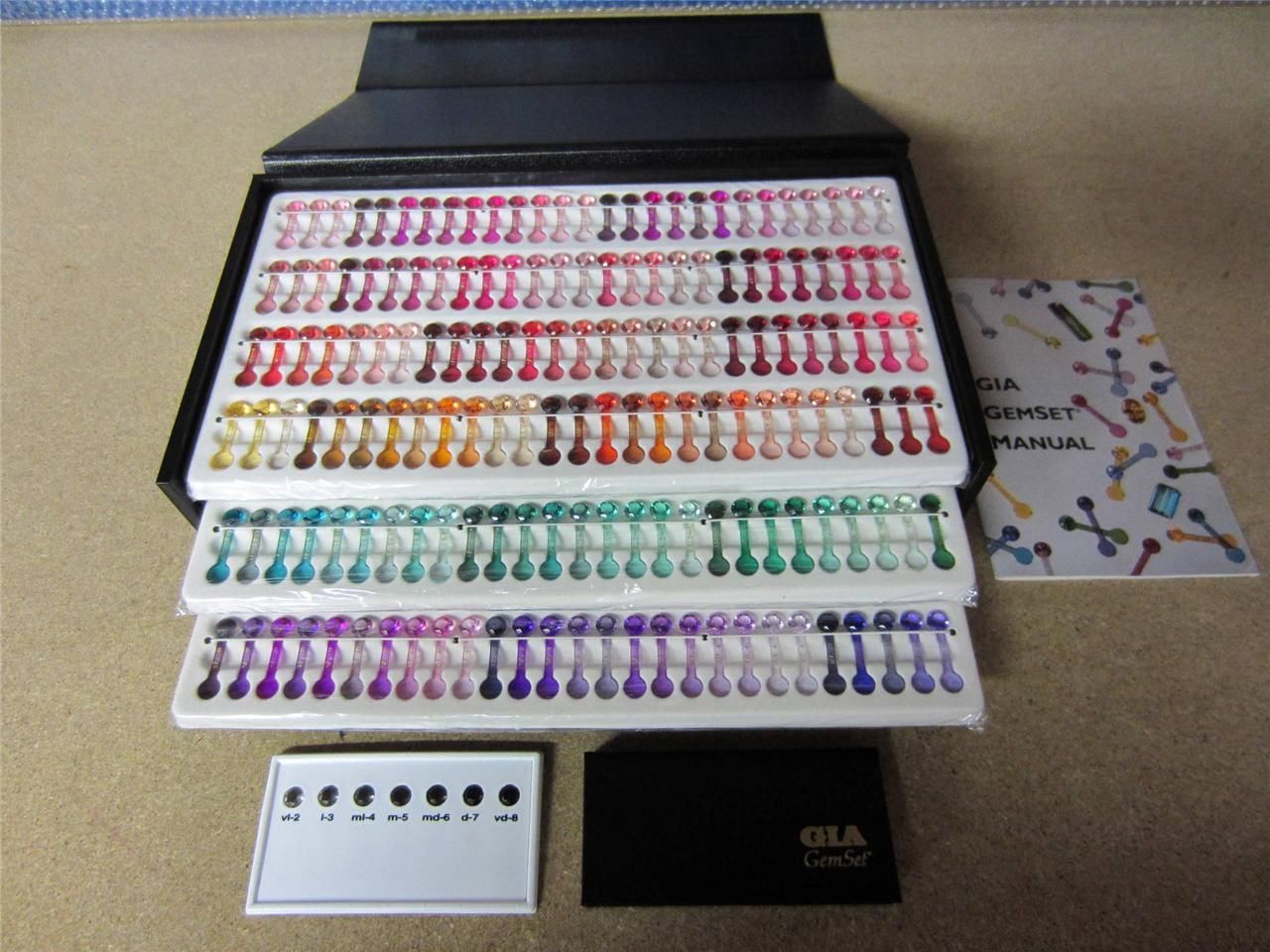What Happened to the GIA GemSet Color and Hue Wheel?
The GIA GemSet offered plastic color masters for color grading gems. It's no longer in production. Software alternatives exist but still face limitations.
Multiple Versions of the GemSet
The GIA made several different sets. The full set included 324 samples and a storage case with three trays. Another contained the samples in binders. The most common version seems to be the "Hue Wheel" GemSet, shown below. This is the one I have, and I love it. I think I bought it for around $350 in late 2014 from a retiring jeweler. He used it for his GIA coursework in 1992. I found the picture of this one on an old eBay listing, although mine is identical.
Here, you can see the full set in practical use.
Software Alternatives for Color Grading
As an alternative, the GIA now uses a software color grading system. Invented by Israeli gem dealer Menahem Sevdermish, Gemewizard can identify 31 master color hues. This program recreates each hue in six color tones. Then, it divides each tone into six levels of saturation. All told, this system makes available 1,116 gemstone colors. Students and dealers can download depictions of these gemstone colors.
The software approach has been suggested before. However, computer monitors vary in their reproduction of colors. This remains the primary obstacle to this alternative.
Donald Clark, CSM IMG
Donald Clark, CSM founded the International Gem Society in 1998. Donald started in the gem and jewelry industry in 1976. He received his formal gemology training from the Gemological Institute of America (GIA) and the American Society of Gemcutters (ASG). The letters “CSM” after his name stood for Certified Supreme Master Gemcutter, a designation of Wykoff’s ASG which has often been referred to as the doctorate of gem cutting. The American Society of Gemcutters only had 54 people reach this level. Along with dozens of articles for leading trade magazines, Donald authored the book “Modern Faceting, the Easy Way.”
Related Articles
How to Evaluate Diamond Symmetry
Learn to Use a Refractometer (Video)
How to Build a Home Gemology Laboratory
The Microscope: A Guide for Gemologists
Latest Articles
Amethyst Sources Around the World: The Geological Story Behind These Purple Gemstones
Brazilianite Value, Price, and Jewelry Information
Ruby-Glass Composites vs Leaded Glass Clarity Enhancements
Morganite Buying Guide
Never Stop Learning
When you join the IGS community, you get trusted diamond & gemstone information when you need it.
Get Gemology Insights
Get started with the International Gem Society’s free guide to gemstone identification. Join our weekly newsletter & get a free copy of the Gem ID Checklist!
